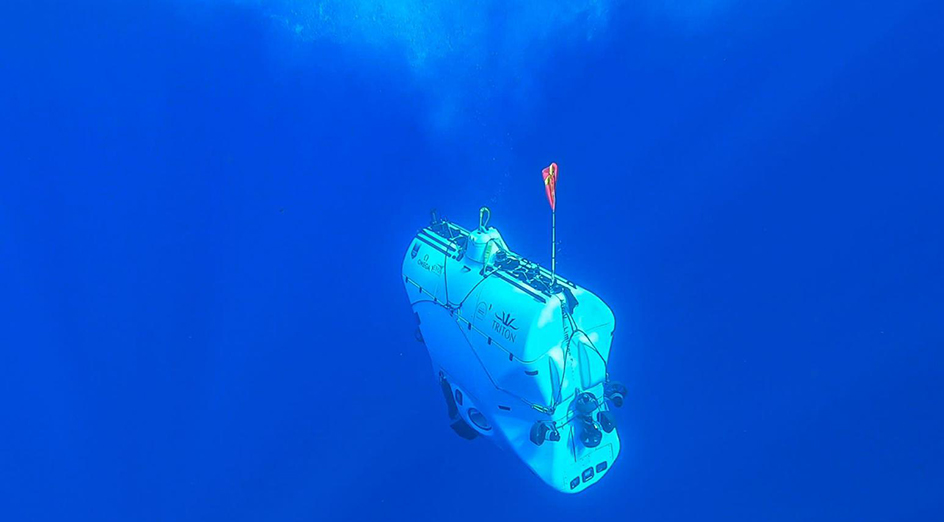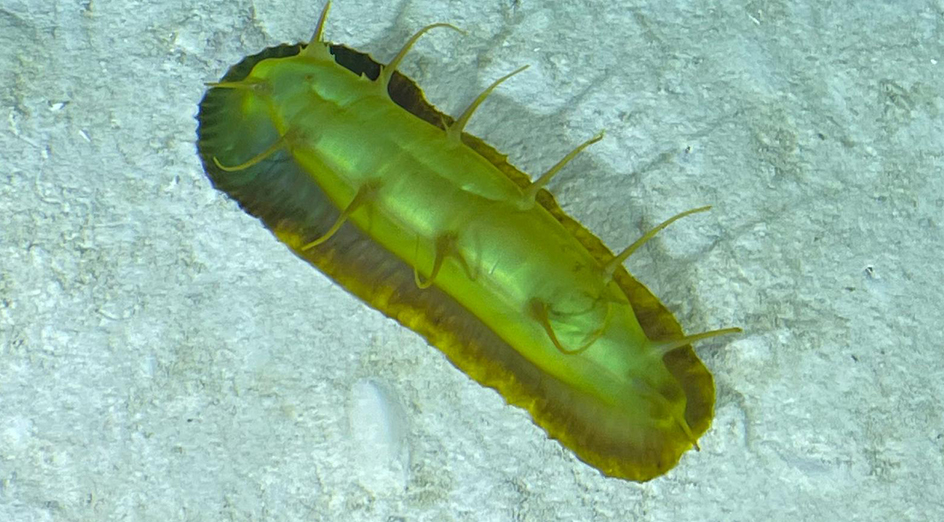Scientists have used a human-occupied submersible to explore one of the Indian Ocean's deepest and little-known spots, documenting its unique habitat and diverse marine life.
"This knowledge is critical to determine the functional role of deep-sea environments at an oceanic and global scale."
Dr Todd Bond
Researchers from The University of Western Australia led an expedition to explore the Wallaby-Cuvier Escarpment, a 700km long geological feature marking the southern boundary of the Cuvier Plateau, about 450km off the WA coast.
Plumbing depths of up to 5.5km, the team used a submersible vehicle and a multibeam echo sounder to shed light on the area's seafloor, discovering more than 50 distinctive organisms including corals, sponges and a spherical single-cell organism they referred to as a 'mud ball'.
 Image: A human-occupied submersible DSV Limiting Factor used to survey the habitat and benthic fauna at the Wallaby-Cuvier Escarpment.
Image: A human-occupied submersible DSV Limiting Factor used to survey the habitat and benthic fauna at the Wallaby-Cuvier Escarpment.
Lead author Dr Todd Bond, from UWA's School of Biological Sciences and the Minderoo-UWA Deep-Sea Research Centre, said the research filled a critical knowledge gap about the largely unexplored area.
"The deepest parts of the eastern Indian Ocean are not well-explored, so this voyage aimed to investigate several geological features in the area," Dr Bond said.
"We were surprised by the diversity of organisms we filmed in just two days, the most common of which was the xenophyophore, a fan-like organism found mostly on the flat regions of the escarpment.
"We also found small 'mud balls', which we believe are gromiids – enigmatic single-celled organisms housed in a sphere of mud.
"These were recorded at the base of the escarpment where they provide a complex and food rich micro-habitat."
 Image: A sea cucumber (Benthodytes sp) filmed at 2924m water depth by UWA scientist Professor Alan Jamieson onboard the submersible DSV Limiting Factor.
Image: A sea cucumber (Benthodytes sp) filmed at 2924m water depth by UWA scientist Professor Alan Jamieson onboard the submersible DSV Limiting Factor.
Dr Bond said this type of research not only provided a catalogue of organisms at a particular location but also contributed to a greater understanding of deep-sea ecosystems.
"This knowledge is critical to determine the functional role of deep-sea environments at an oceanic and global scale – how geomorphology and organisms relate, how habitat and species change with depth, and how these geological structures evolve," he said.
"Once we know this, we can begin to better conserve these habitats and their function. Ongoing monitoring in deep-sea environments is rare, but it's needed to understand anthropogenic impacts including climate change."
The study, a collaboration between Caladan Oceanic, UWA and Minderoo Foundation, was published in Deep-Sea Research Part II.






